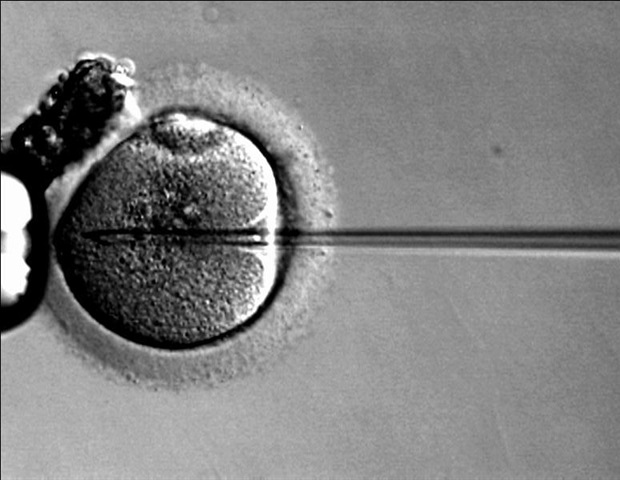Gene remedy might probably treatment genetic illnesses however it stays a problem to package deal and ship new genes to particular cells safely and successfully. Present strategies of engineering one of the crucial generally used gene-delivery autos, adeno-associated viruses (AAV), are sometimes gradual and inefficient.
Now, researchers on the Broad Institute of MIT and Harvard have developed a machine-learning method that guarantees to hurry up AAV engineering for gene remedy. The instrument helps researchers engineer the protein shells of AAVs, known as capsids, to have a number of fascinating traits, equivalent to the power to ship cargo to a selected organ however not others or to work in a number of species. Different strategies solely search for capsids which have one trait at a time.
The workforce used their method to design capsids for a generally used sort of AAV known as AAV9 that extra effectively focused the liver and may very well be simply manufactured. They discovered that about 90 % of the capsids predicted by their machine studying fashions efficiently delivered their cargo to human liver cells and met 5 different key standards. In addition they discovered that their machine studying mannequin appropriately predicted the conduct of the proteins in macaque monkeys though it was educated solely on mouse and human cell knowledge. This discovering means that the brand new technique might assist scientists extra shortly design AAVs that work throughout species, which is crucial for translating gene therapies to people.
The findings, which appeared just lately in Nature Communications, come from the lab of Ben Deverman, institute scientist and director of vector engineering on the Stanley Heart for Psychiatric Analysis on the Broad. Fatma-Elzahraa Eid, a senior machine studying scientist in Deverman’s group, was the primary creator of the research.
This was a extremely distinctive method, It highlights the significance of moist lab biologists working with machine studying scientists early to design experiments that generate machine studying enabling knowledge quite than as an afterthought.”
Ben Deverman, Institute Scientist and Director, Vector Engineering, Stanley Heart for Psychiatric Analysis, Broad Institute
Group chief Ken Chan, graduate scholar Albert Chen, analysis affiliate Isabelle Tobey, and scientific advisor Alina Chan, all in Deverman’s lab, additionally contributed considerably to the research.
Make means for machines
Conventional approaches for designing AAVs contain producing giant libraries containing thousands and thousands of capsid protein variants after which testing them in cells and animals in a number of rounds of choice. This course of may be expensive and time-consuming, and usually ends in researchers figuring out solely a handful of capsids which have a selected trait. This makes it difficult to seek out capsids that meet a number of standards.
Different teams have used machine studying to expedite large-scale evaluation, however most strategies optimized proteins for one perform on the expense of one other.
Deverman and Eid realized that datasets based mostly on current giant AAV libraries weren’t effectively fitted to coaching machine studying fashions. “As an alternative of simply taking knowledge and giving it to machine studying scientists we thought, ‘What do we have to practice machine studying fashions higher?'” Eid mentioned. “Figuring that out was actually instrumental.”
They first used an preliminary spherical of machine studying modeling to generate a brand new reasonably sized library, known as Fit4Function, which contained capsids that have been predicted to package deal gene cargo effectively. The workforce screened the library in human cells and mice to seek out capsids that had particular capabilities vital for gene remedy in every species. They then used that knowledge to construct a number of machine studying fashions that might every predict a sure perform from a capsid’s amino acid sequence. Lastly, they used the fashions together to create “multifunction” libraries of AAVs optimized for a number of traits without delay.
The way forward for protein design
As proof of idea, Eid and different researchers in Deverman’s lab mixed six fashions to design a library of capsids that had a number of desired capabilities, together with manufacturability and the power to focus on the liver throughout human cells and mice. Nearly 90 % of those proteins displayed all the desired capabilities concurrently.
The researchers additionally discovered that the mannequin -; educated solely on knowledge from mice and human cells -; appropriately predicted how AAVs distributed to completely different organs of macaques, suggesting that these AAVs do that by a mechanism that interprets throughout species. That would imply that sooner or later, gene remedy researchers might extra shortly establish capsids with a number of fascinating properties for human use.
Sooner or later, Eid and Deverman say their fashions might assist different teams create gene therapies that both goal or particularly keep away from the liver. In addition they hope that different labs will use their method to generate fashions and libraries of their very own that, collectively, might kind a machine-learning atlas: a useful resource that might predict the efficiency of AAV capsids throughout dozens of traits to speed up gene remedy growth.
Supply:
Broad Institute of MIT and Harvard
Journal reference:
Eid, F.-E., et al. (2024). Systematic multi-trait AAV capsid engineering for environment friendly gene supply. Nature Communications. doi.org/10.1038/s41467-024-50555-y

0 Comments